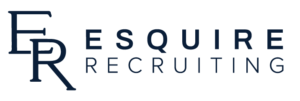Welcome back, everyone! Today we are here with our final note from Q1 of 2024; we’re so happy to have connected with so many of you throughout 2024 already, and we can’t wait to continue expanding our growth and job placements! We wanted to inform you that as of April 1st, our blog will be taking a temporary hiatus so that we can regroup internally and ensure we are addressing all top-priority initiatives.
That being said, we wanted to leave you off with a note about one of our favorite topics… Spring refresh! If you’ve been tuning in over the years, it comes as no shock that we love to take advantage of any opportunity to engage in a refresh, Spring clean, goal assessment, personal check-in, and more. So, how can you optimize the Spring season and sense of renewal? Find out everything you need to know… below!
‘Springing’ into a New Season!
Let’s Chat… Cleaning!
Spring cleaning is a phrase we all know and love. There’s no better way to engage in a refreshed mindset than by refreshing the space around you. We are huge fans of engaging with the “turning hanger” rule – i.e.: decluttering clothing you haven’t worn in the past few seasons, denoted by “turning the hanger” the opposite way once worn. Ask yourself questions like, “do I wear this?” “Is this still my style?” “Do I need this” “What is the function of this piece of clothing?” etc.! In a matter of minutes, you’ll be able to decipher what clothing is special and meaningful to you, and which garments are simply taking up space. Feel free to apply this mindset to your office supplies, shoes, accessories, or anything else that you think deserves an update!
Switching up Your Space or Work Environment!
Spring is also a fantastic time to create a new space to operate in! Many of us have resorted to make-shifting a home office out of a bedroom, kitchen, or other space – if that sounds like you, then it’s no doubt time for a change! Simply turning your bed in a different direction, purchasing an ‘office deak’, relocating an existing desk in front of a window or toward natural light, or “accessorizing” with a new lamp or curtain will completely transform the energy of your workspace. Even transitioning to a different room or floor in your home could create an entirely new and previously unforeseen way to work! Remember that with repetition we often become passive and at times unengaged, so it’s crucial to optimizing workflow and to-do list that you are operating in an environment that feels productive to YOU!
Checking in with Yourself… How are you Progressing toward Goals?
Finally, a new season brings an optimal moment to re-evaluate a group of goals that had been created a few months prior. Are you on track with the little steps? Holding yourself accountable? Progressing towards an ultimate number, time, percentage, or another measure of success? If so, keep on chugging! If, instead you’re finding that a previously set goal no longer suits your motives, then this is a great time to re-draft your hopes and accountable measure for the rest of spring up to the start of summer. Especially if you are feeling that sinking feeling of being ‘behind’ professionally or as it relates to your job tasks, ensure that you take advantage of a new season (and quarter!) to set a meeting to discuss your priorities, progress, intentions, and career hopes. Looping your management into your career pursuits through an open and honest conversation is the best way to create accountability on their end through support, and identify tangible steps to take to re-direct toward success.
Searching for a new position? Check out our open jobs list!
